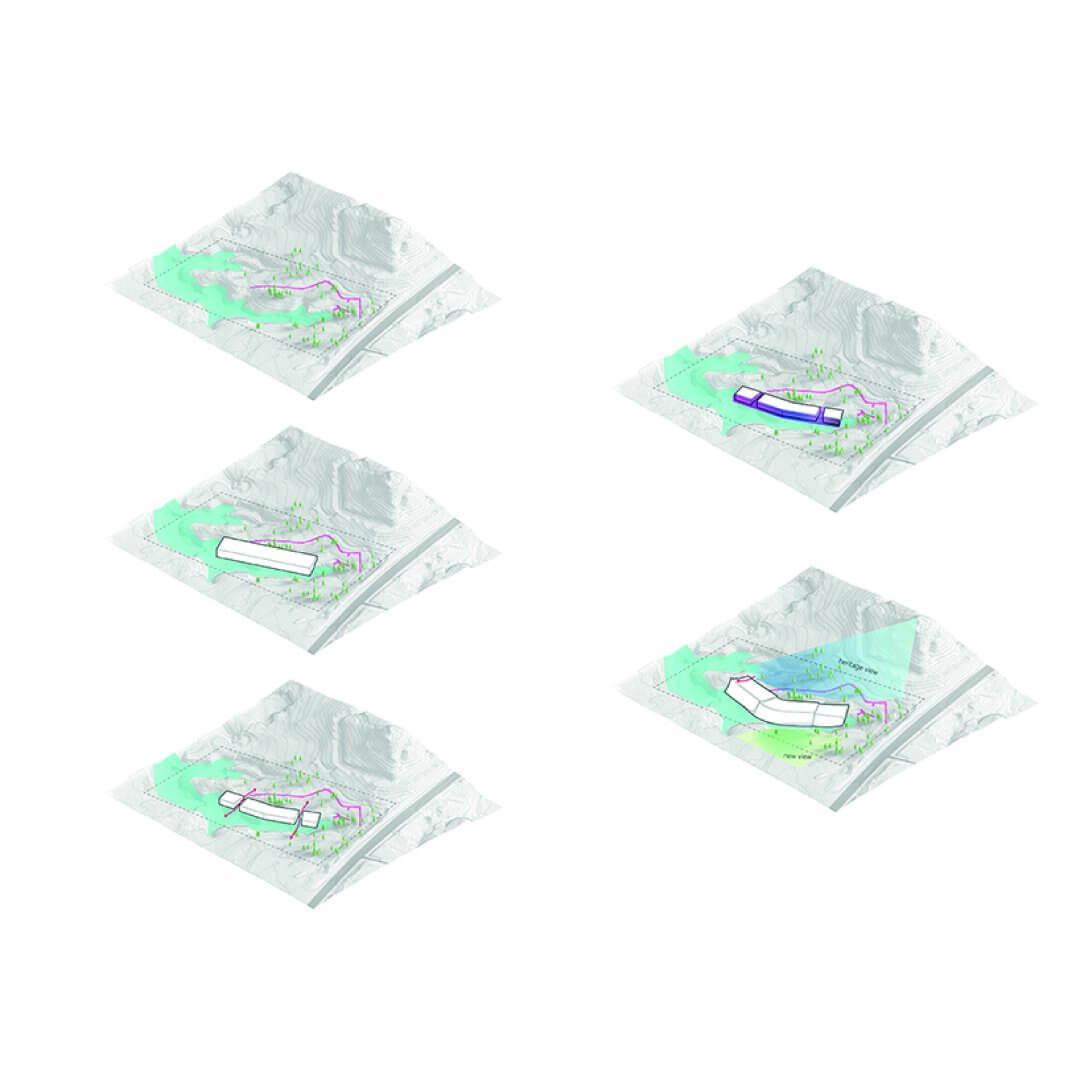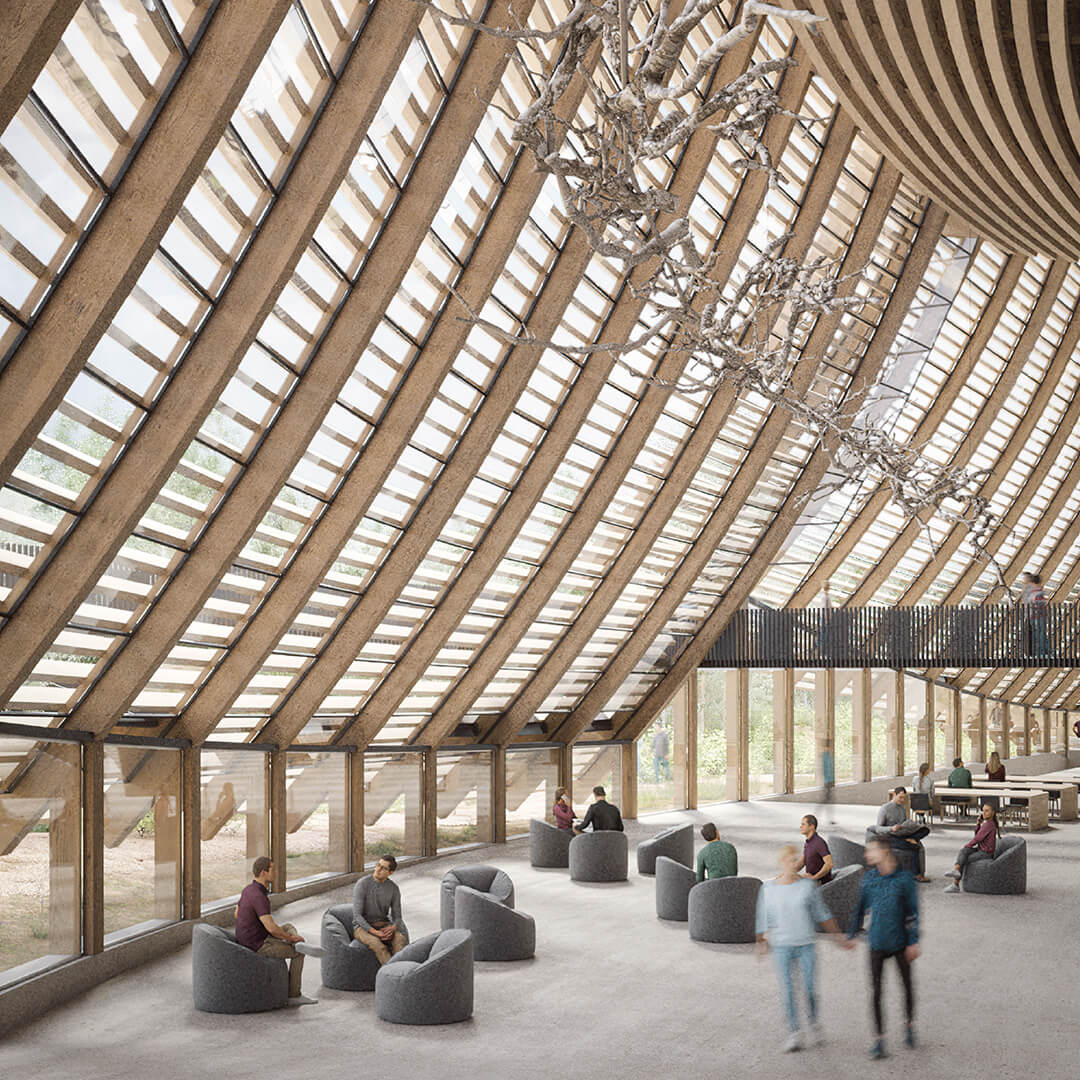Luis Ybarra+Carlos Peraita+Claudio Araya+Riccardo Gialoretto+Elena Gonsalve+Ece Sacalli
A large wooden structure envelopes the proposal for the new Kinmen Library, half-buried in the premises of a former military base.
On Kinmen Island, off the southeast coast of mainland China and governed as a county by the Republic of China (Taiwan), almost at its geometric center, stands the hill where the Special Art and Culture Zone Base, formerly Runan Second Camp District, is located. It used to be the garrison area for the brigade-level troops in the middle section of the Kinmen Defense Command and its infrastructure is preserved as historical heritage mostly at the higher part of the hill.
The project site is located at the foot of the hill, below the military viewpoint, and its three most characteristic elements are the military trench, the depressed wetland and the group of protected trees. The building proposed understands these three elements and interacts with them: it reconstructs the edge of the depressed wetland leaving 100% of protected trees untouched and provides the opportunity of a new interpretation of the trench as a landscape element. In the points of drainage from the hill into the wetland, the building opens up internal patios that connect with the landscape. Around such common spaces the three main program blocks are articulated: museum, library and multifunctional.
The brief´s program indicates the need of a public service space attached to each one of these program blocks.The project proposes the fluidity of such areas along the whole building as the connecting element that composes the promenade. The resulting volume stands half buried at the edge of the wetland, this allows the total conservation of the skyline control range of the military viewpoint while, from the opposite side, it offers a brand new facade to the arriving visitor. The access to the building is solved through bridges over the depressed wetland connecting the parking lot with the different entrances. The main entrance opens through the museum´s bridge whereas the library´s bridge provides members and invitational access.The building´s promenade arrives at the open library space which shows views towards the sea and the coast of mainland China.
From a sustainability perspective, the building takes a step forward on three major points:
1. The solar panels installed on sloping roofs, with an overall surface over 2500m2, can provide energy for the entire building to be self-sufficient.
2. The use of sustainable timber structure reduces carbon emissions helping ease climate change. In the interior spaces it also improves indoor comfort and provides a healthy reading environment.
3. Rain water drains from sloping roof will be collected in a water tank below ground level and can provide building usage and irrigation.
The landscape strategy is based on the reconstruction of the trench as a walkable surface and develops a loop around and through the building.The landscape intersects with the building at two points: the museum internal patio and the library internal patio, after crossing these spaces the promenade connects with the trench. The trench presents different types of spaces along the route, such as narrow paths where the visitor feels the connection to the soil, spots where it opens up to the landscape with steps for reading or resting, and spots where it carves the terrain to offer protected spaces where readings, exhibitions and performances can be held surrounded by the protected trees and views of the original landscape. The phasing concept considers that the library and the museum are the priorities and that they could be built alone one before the other and closing their edges with the same glazing system as the open library space does. At a later stage the multifunctional part of the building could be constructed as a link between the two.
Authors: Luis Ybarra+Carlos Peraita+Claudio Araya+Riccardo Gialoretto+Elena Gonsalve+Ece Sacalli, for Eddea Works.
Location: Kinmen, Taiwan.
Year: 2022
Competition: Kinmen Library International Design Competition.










